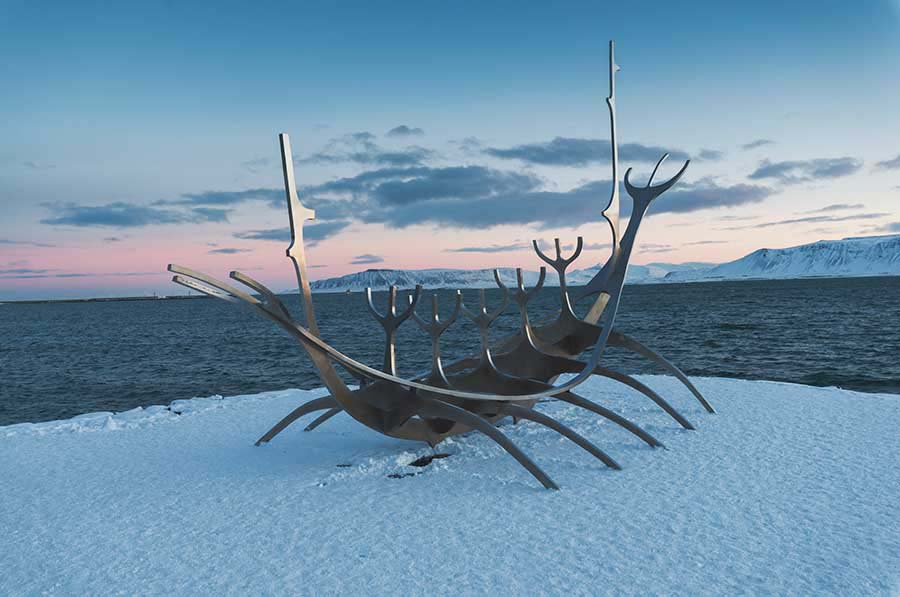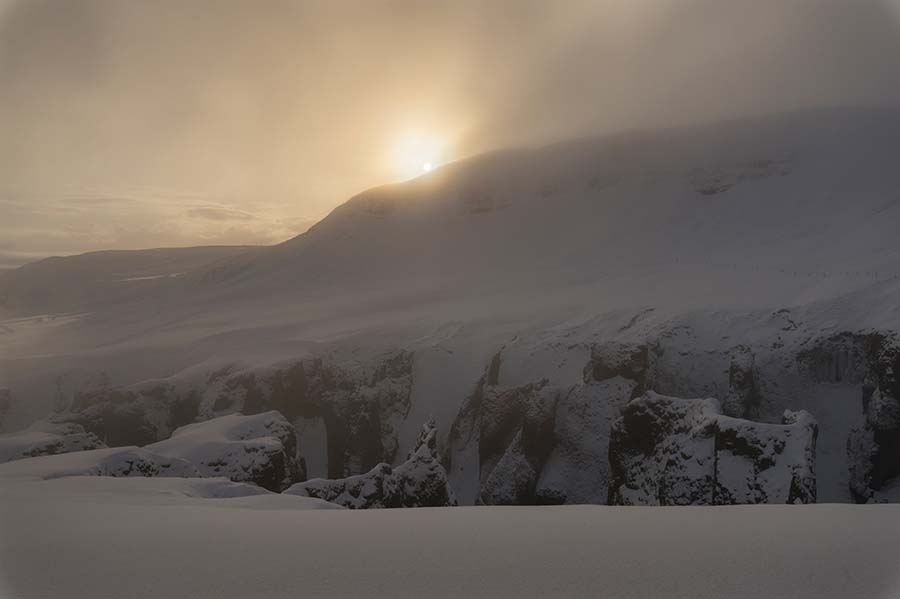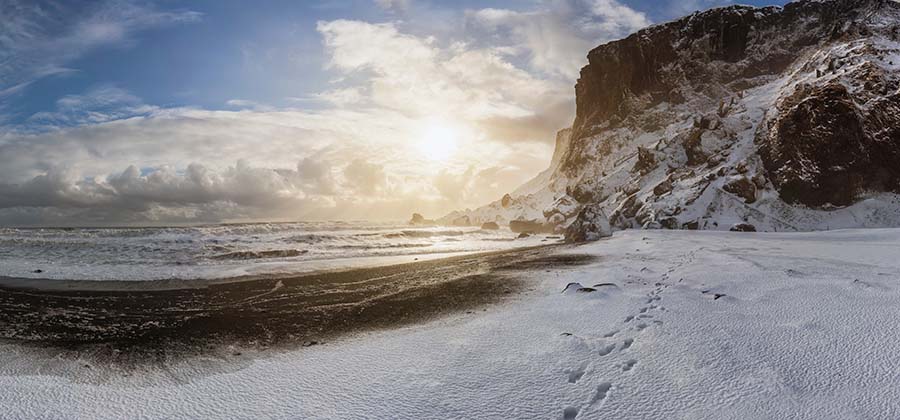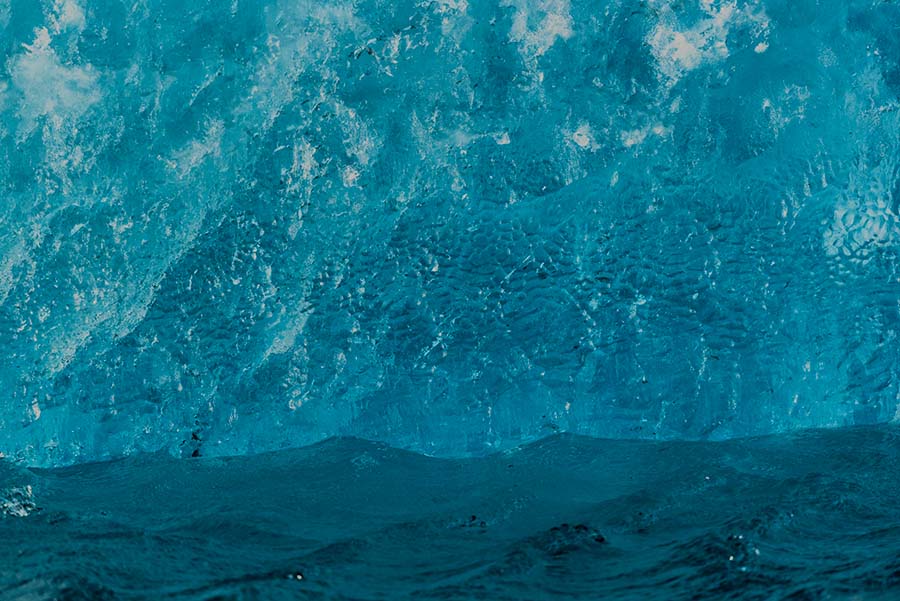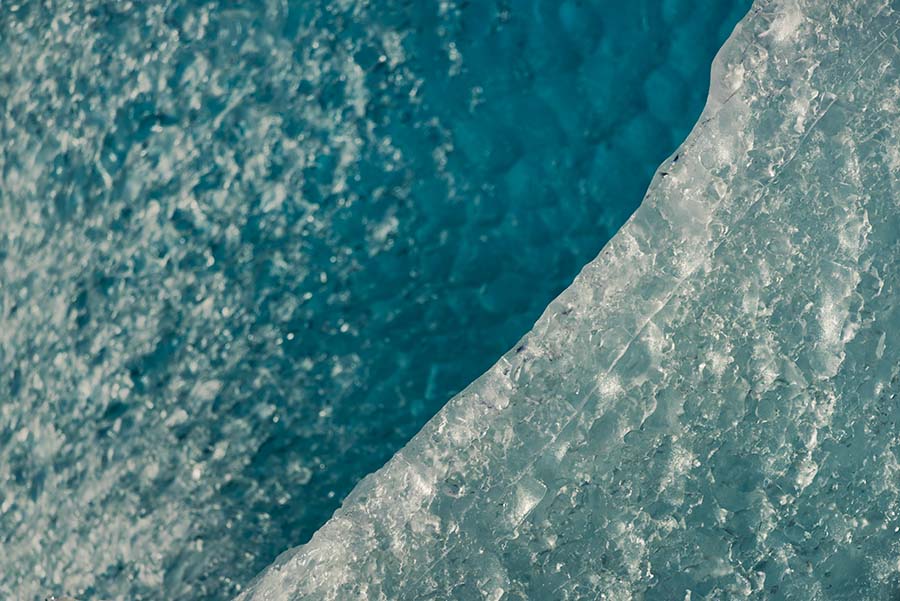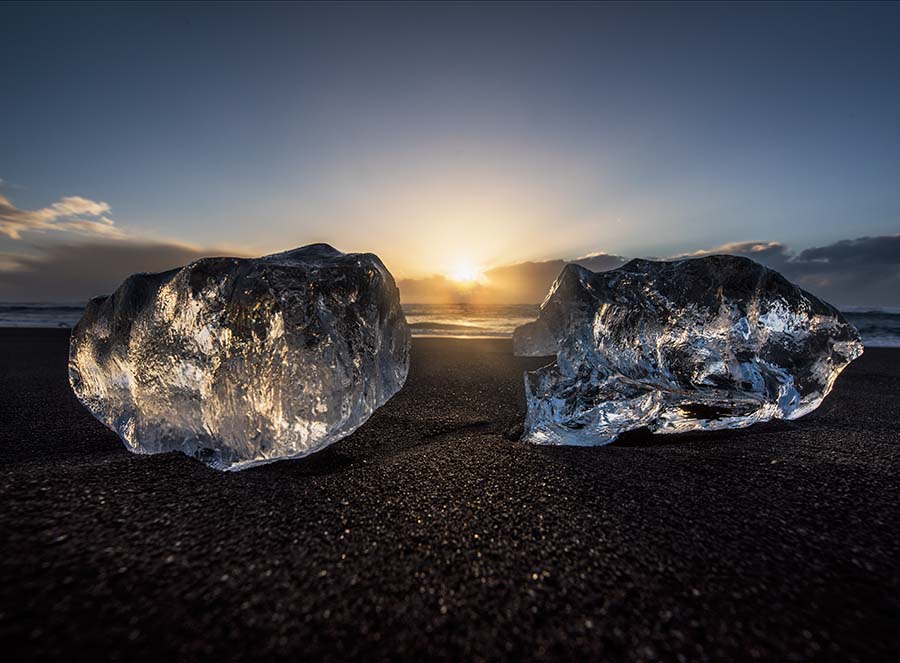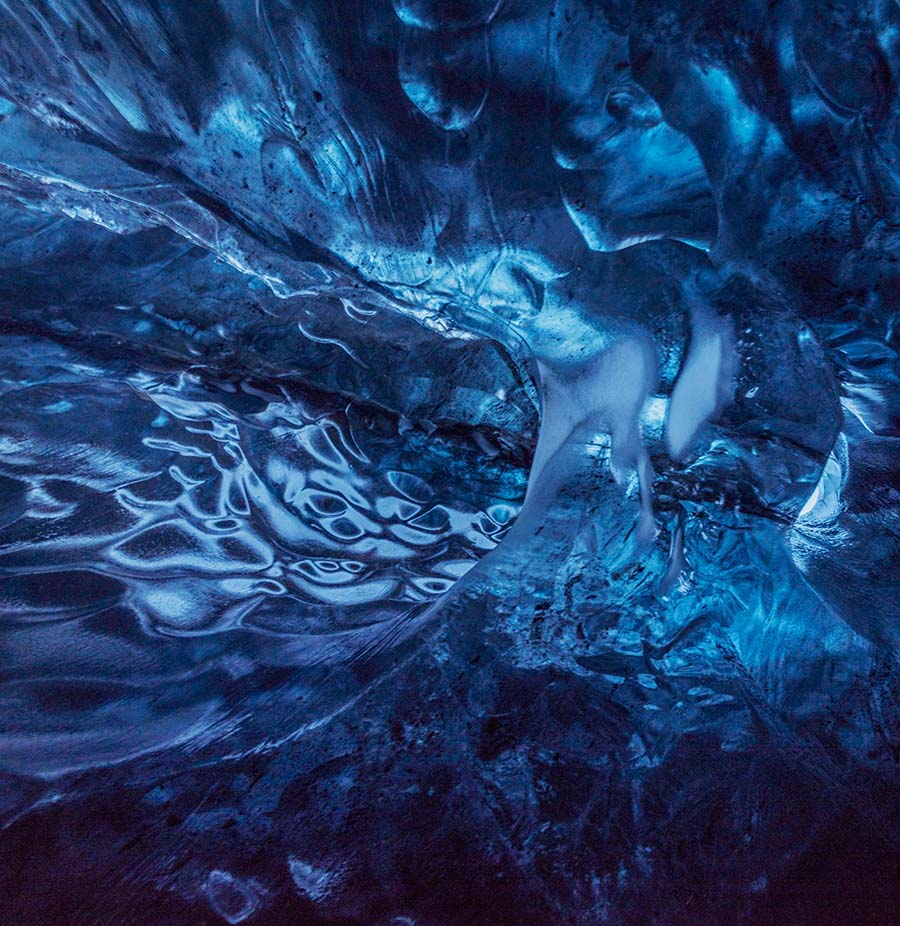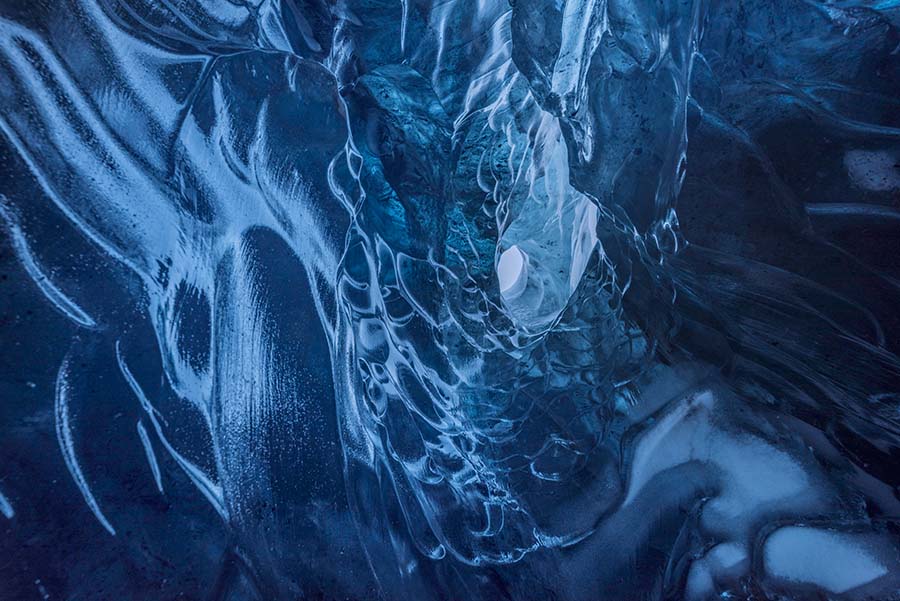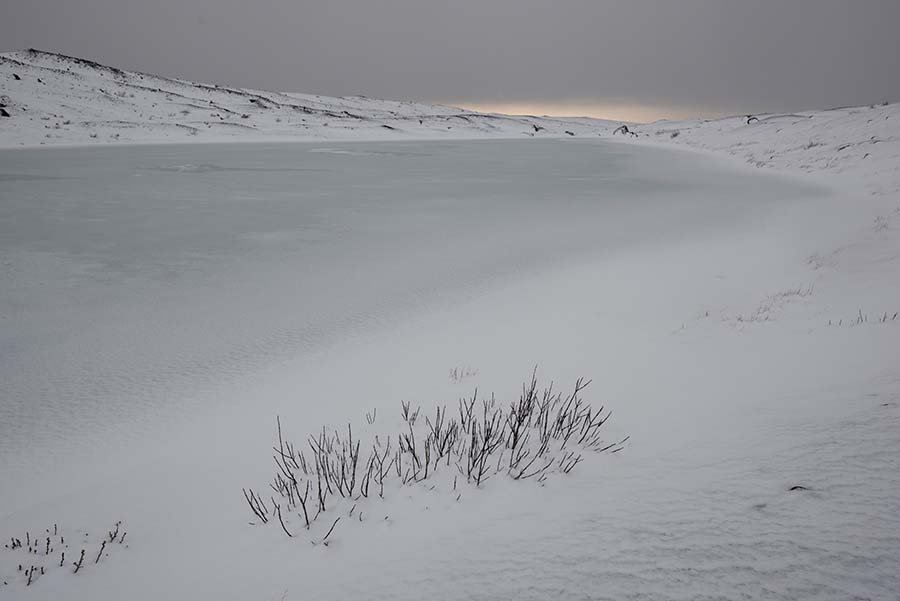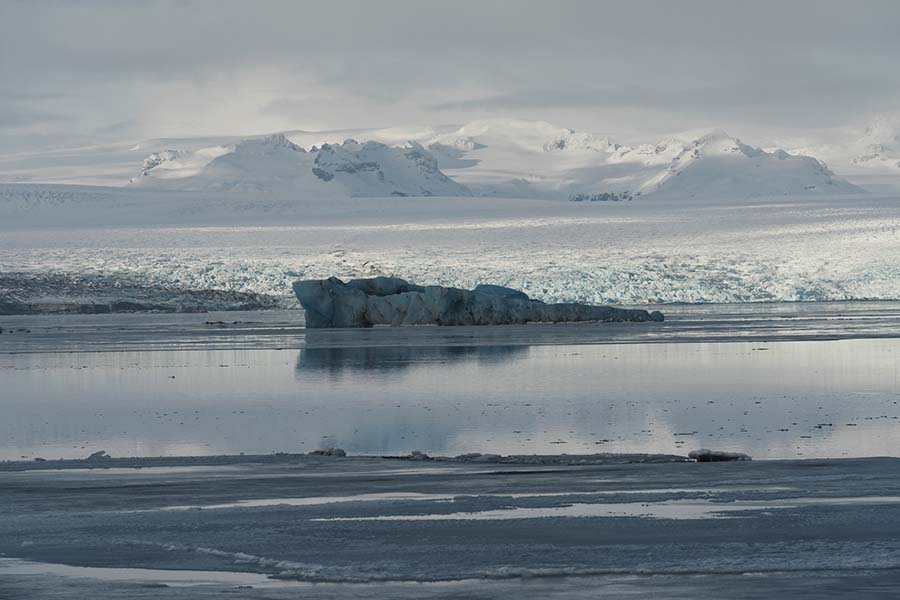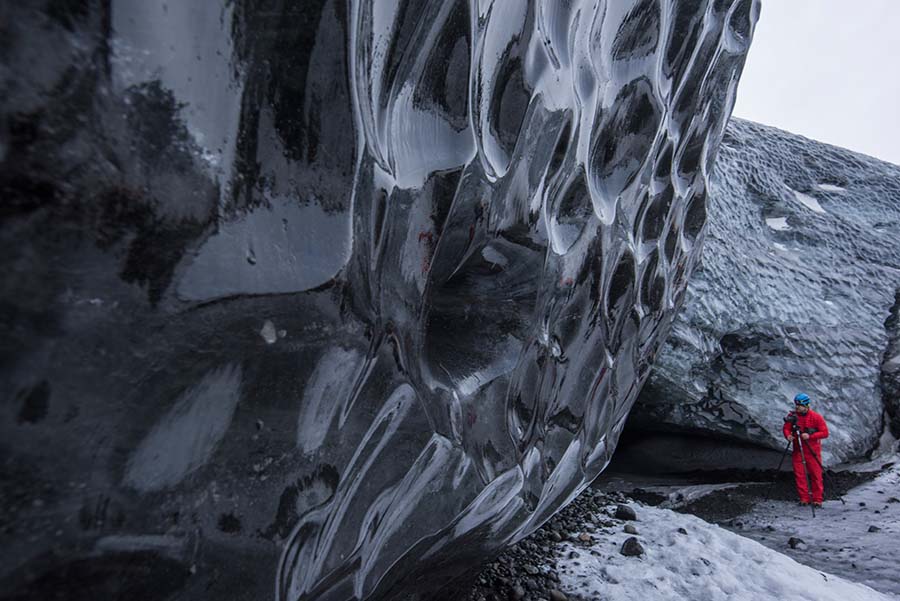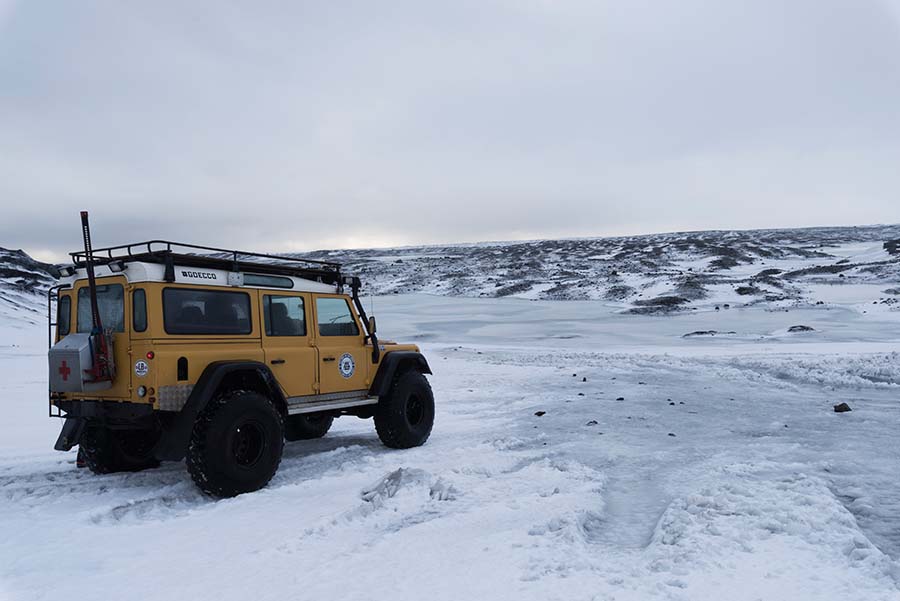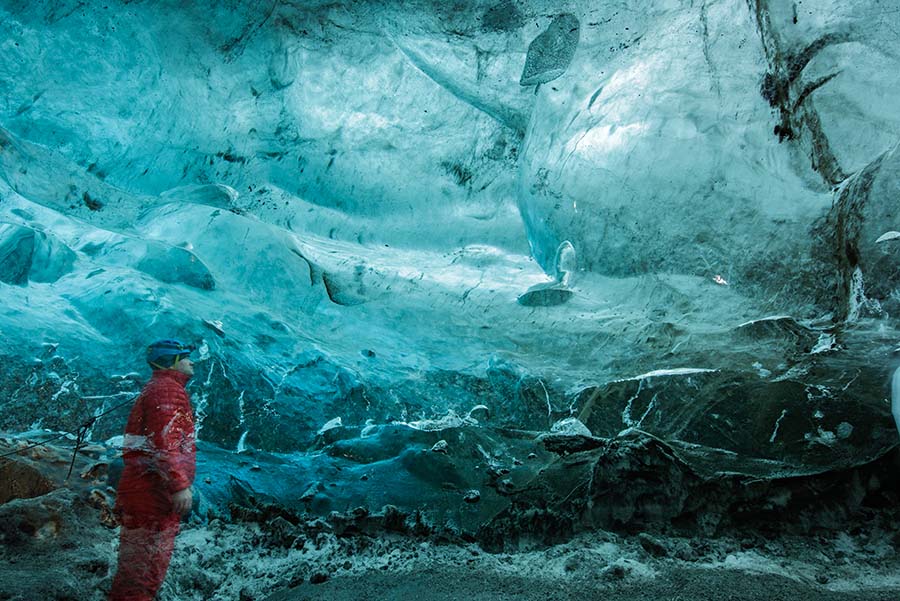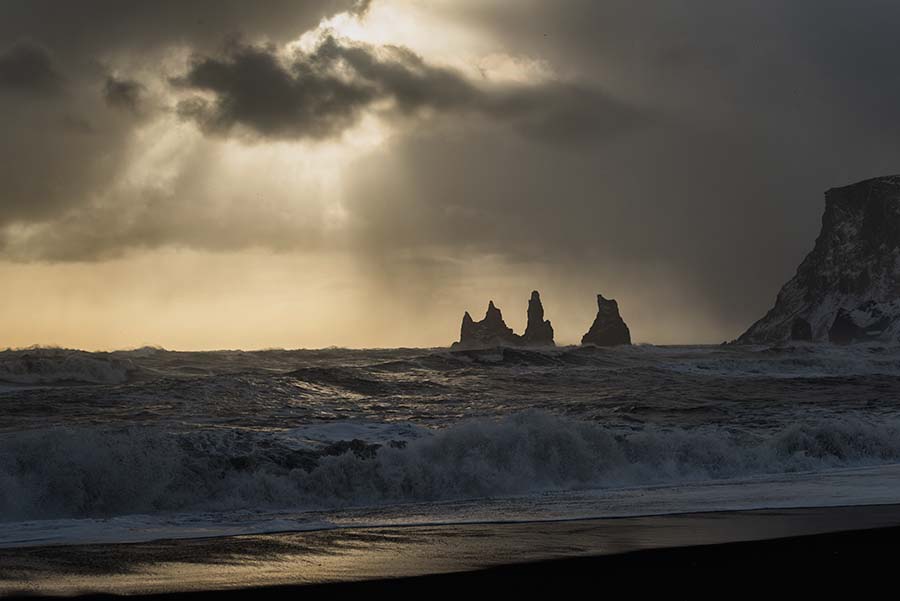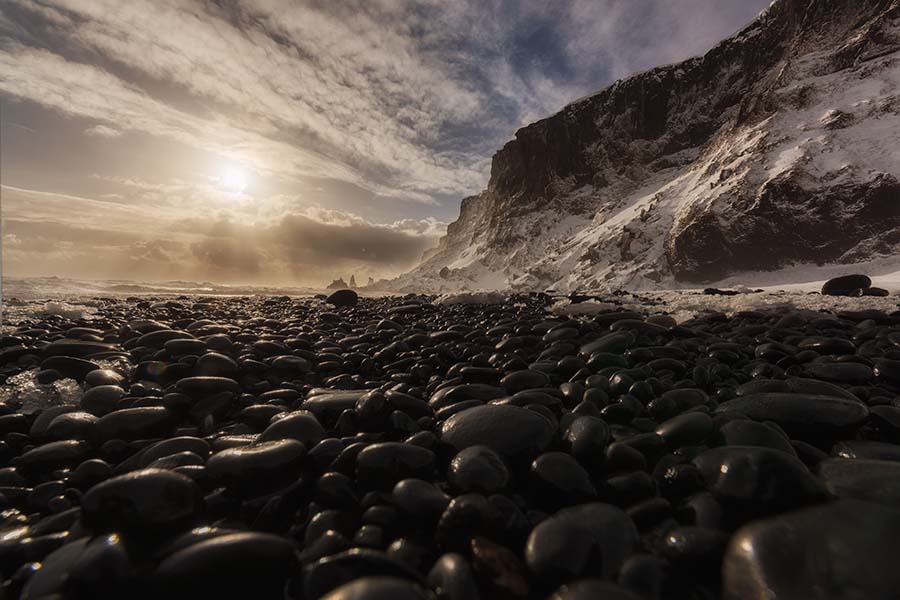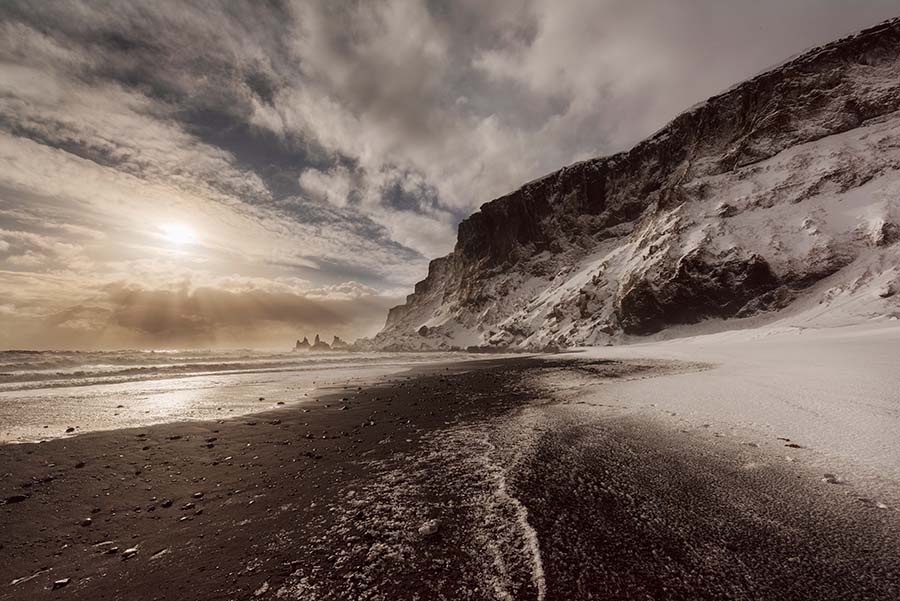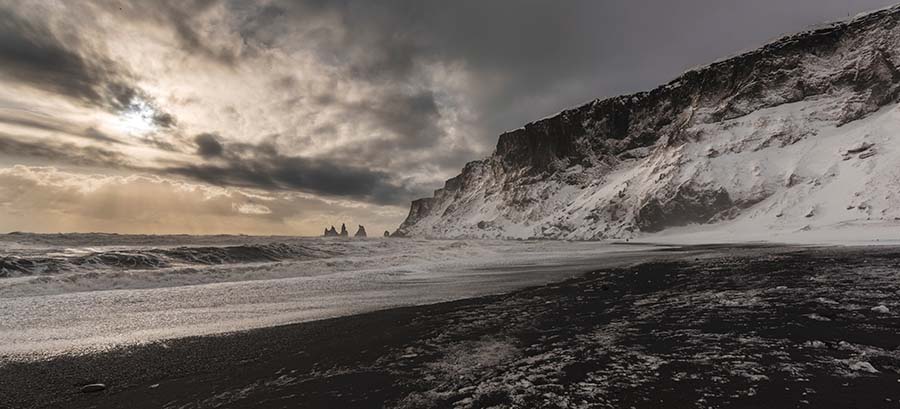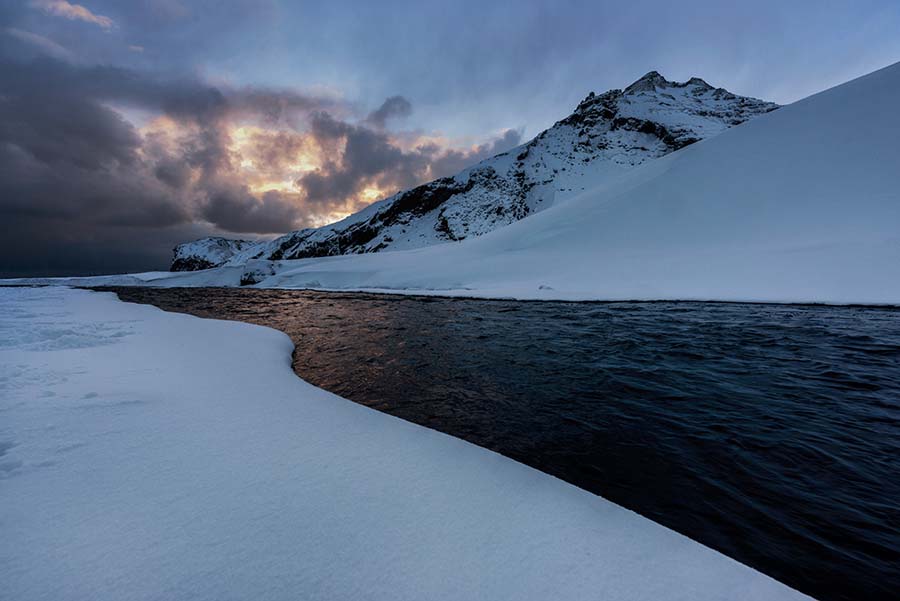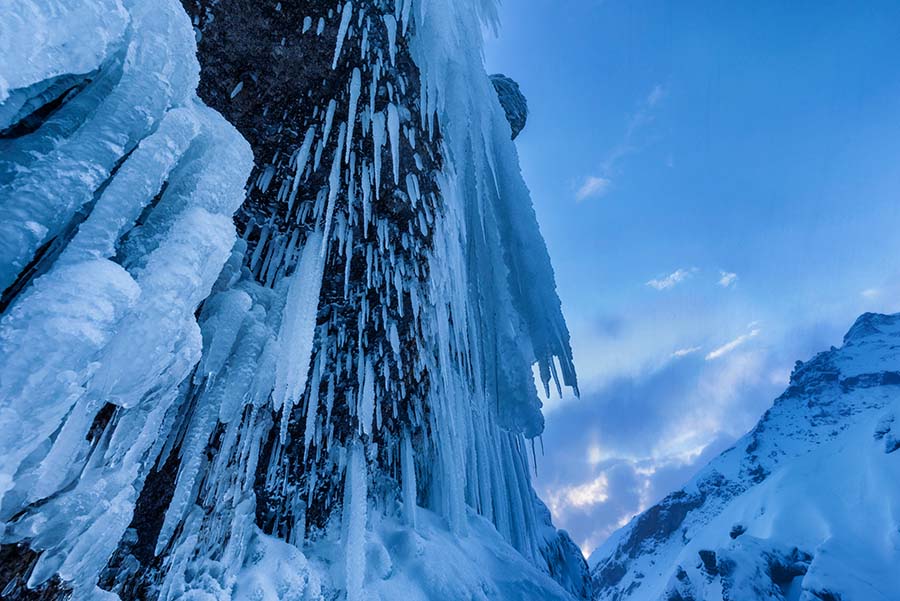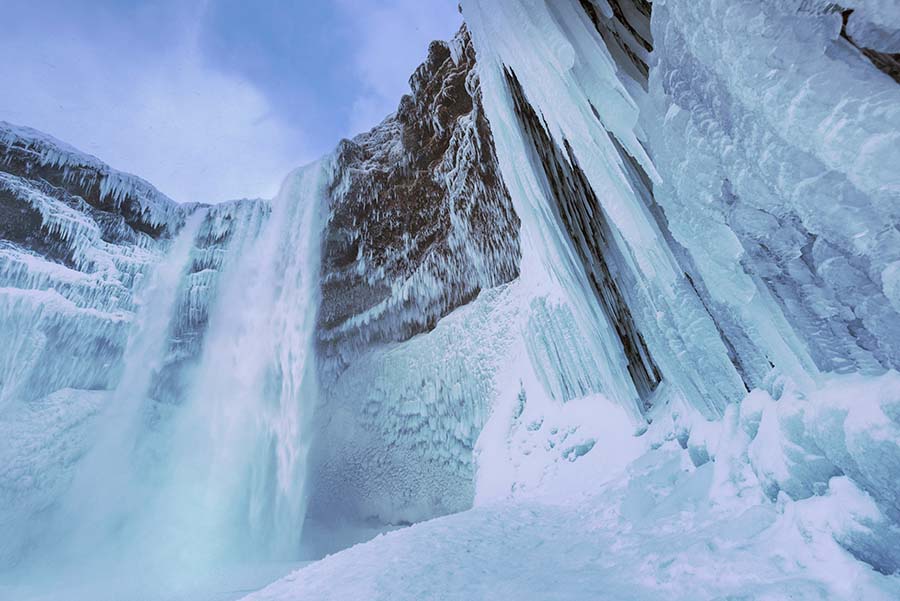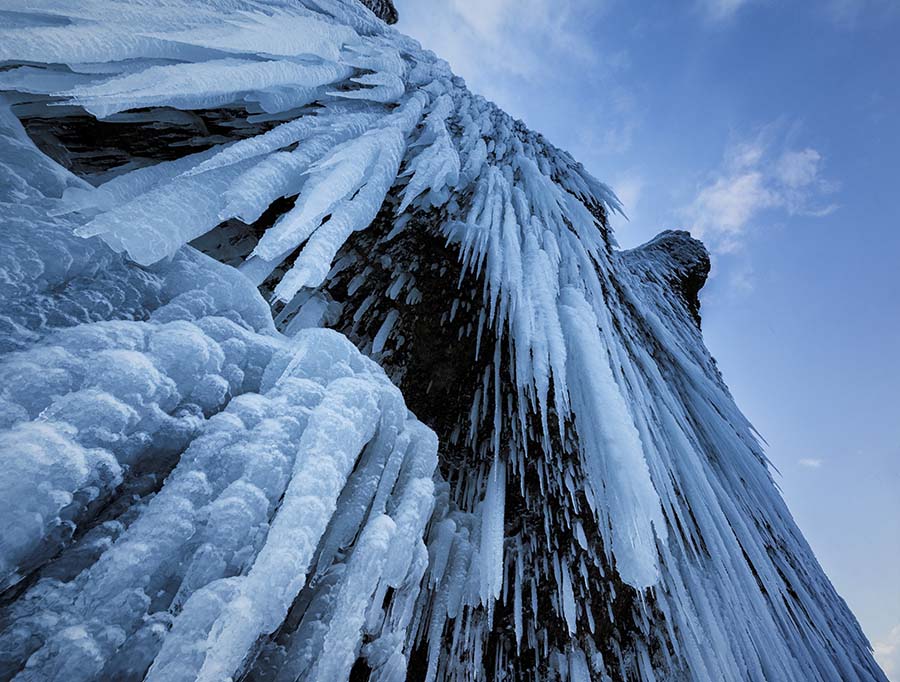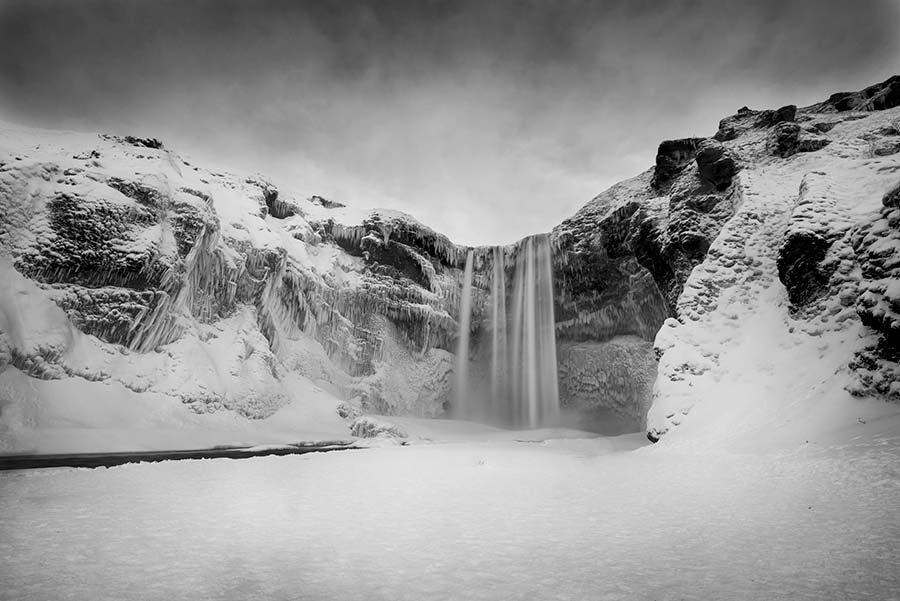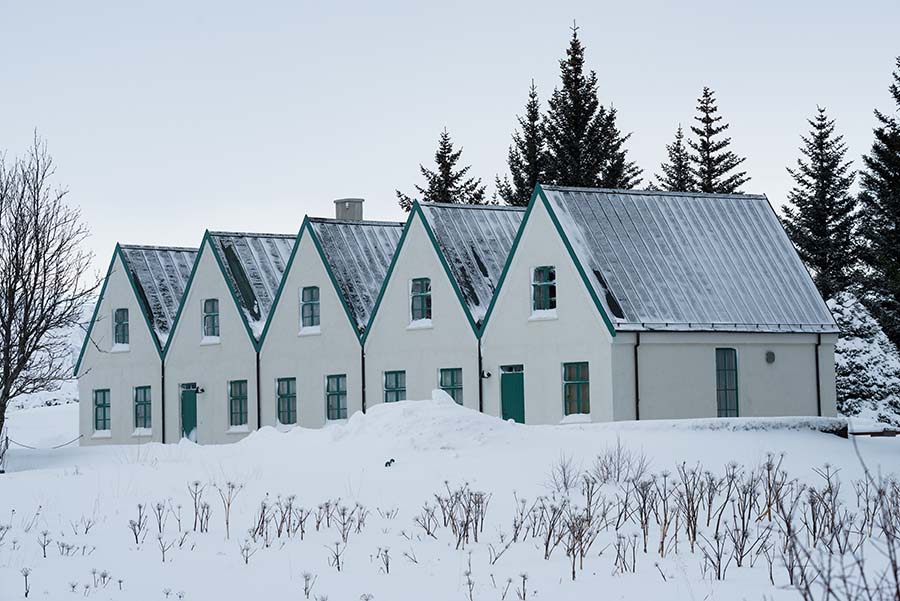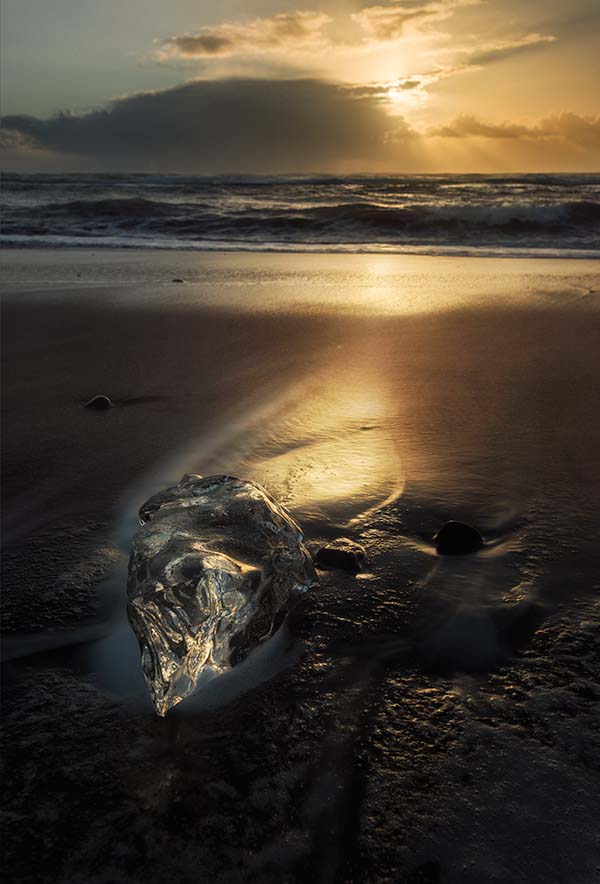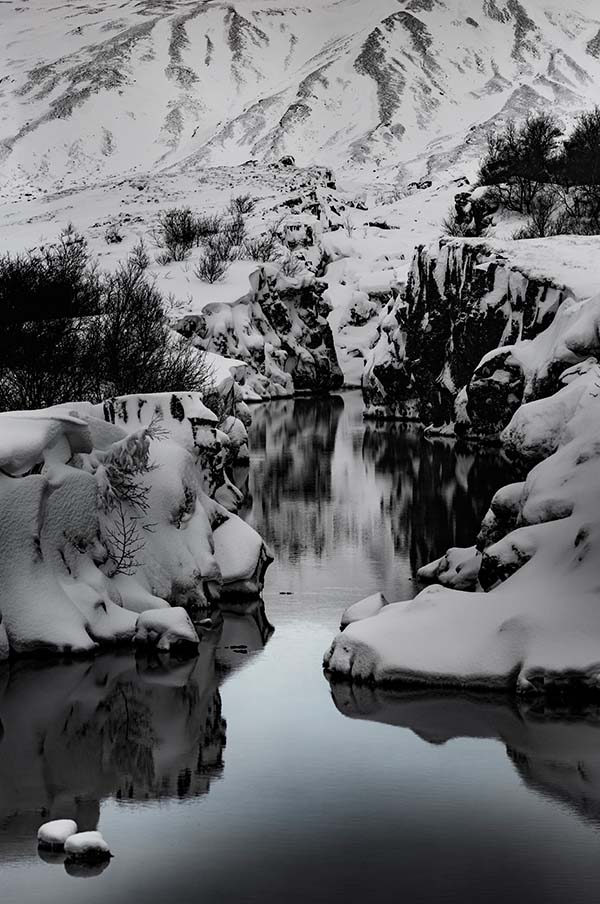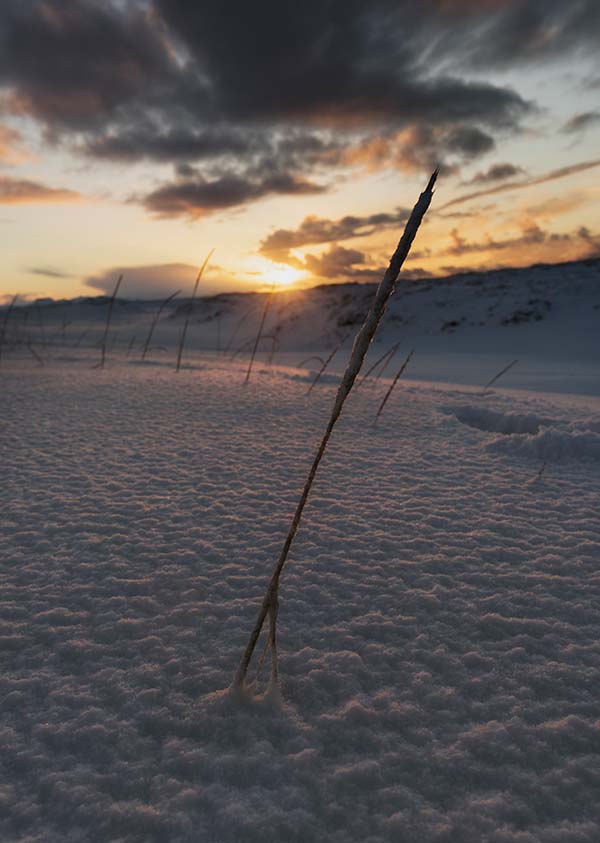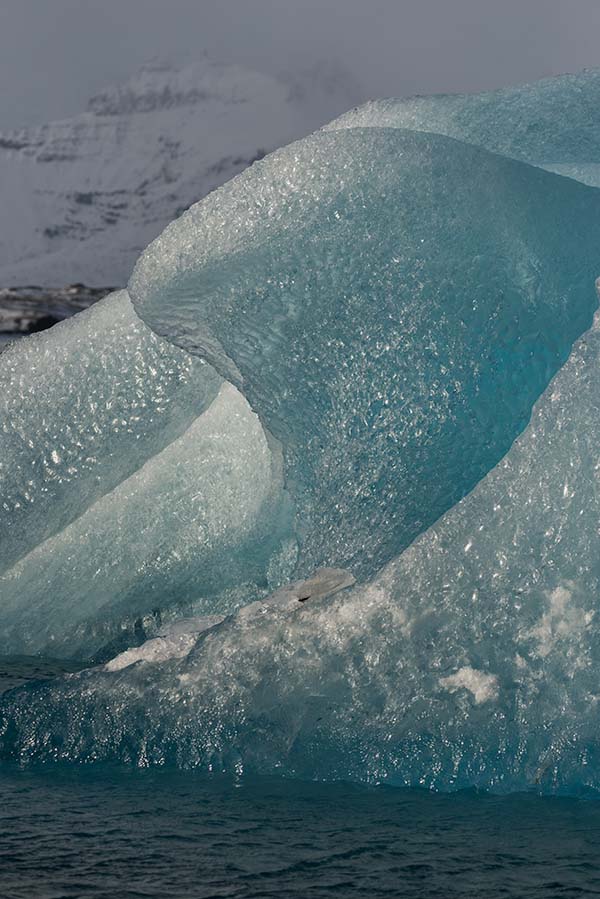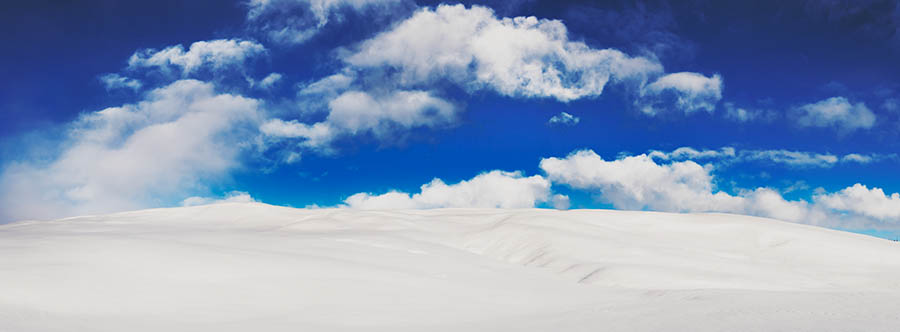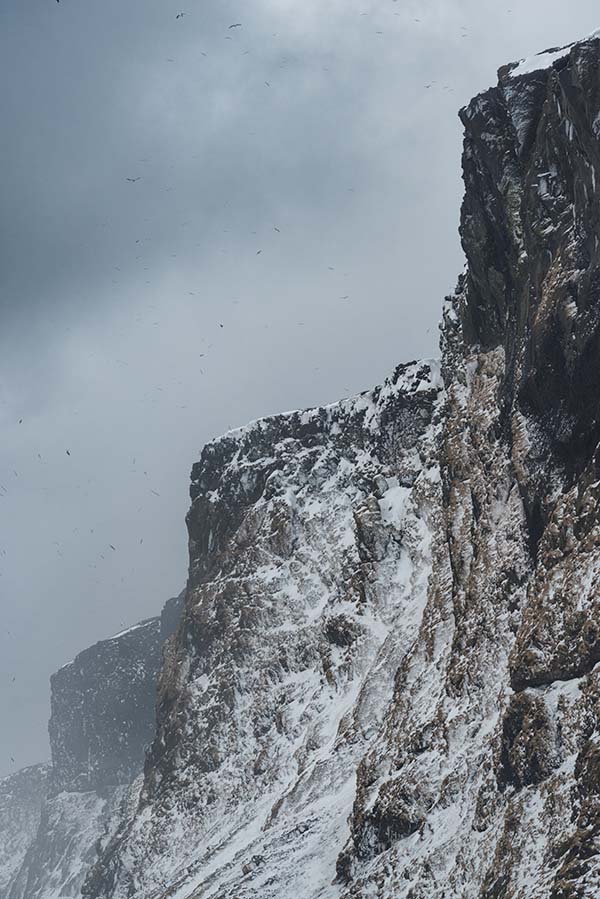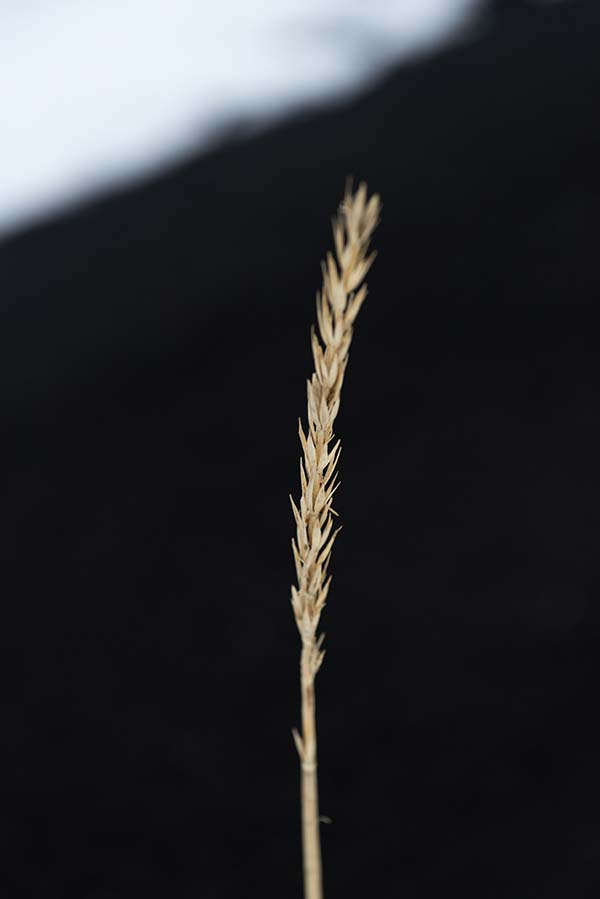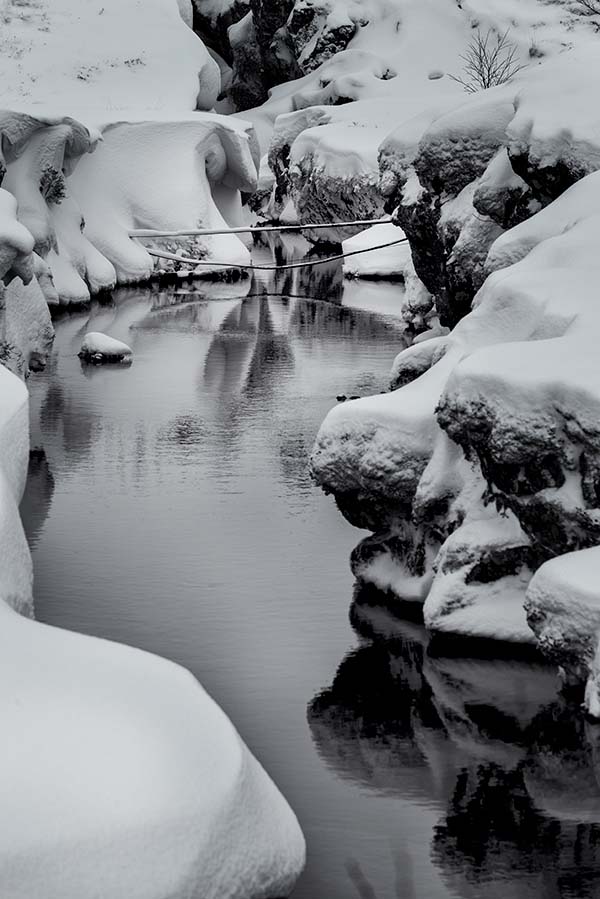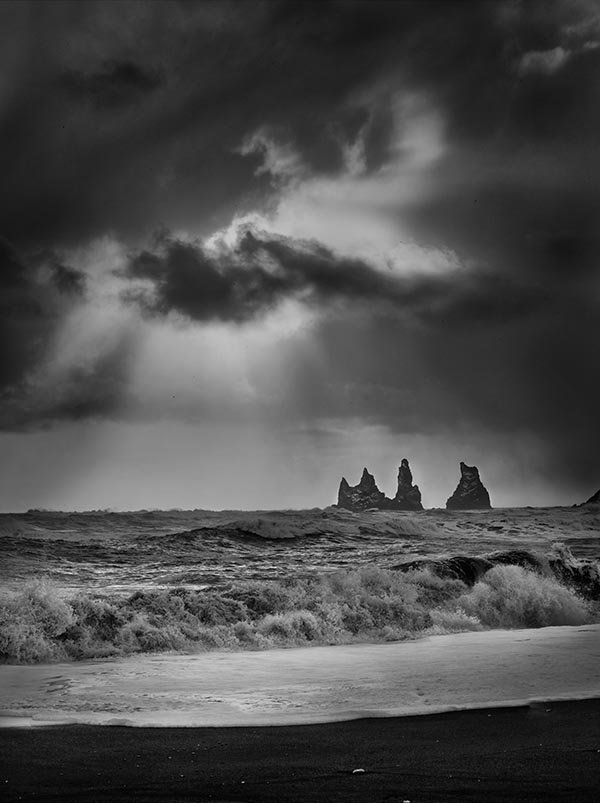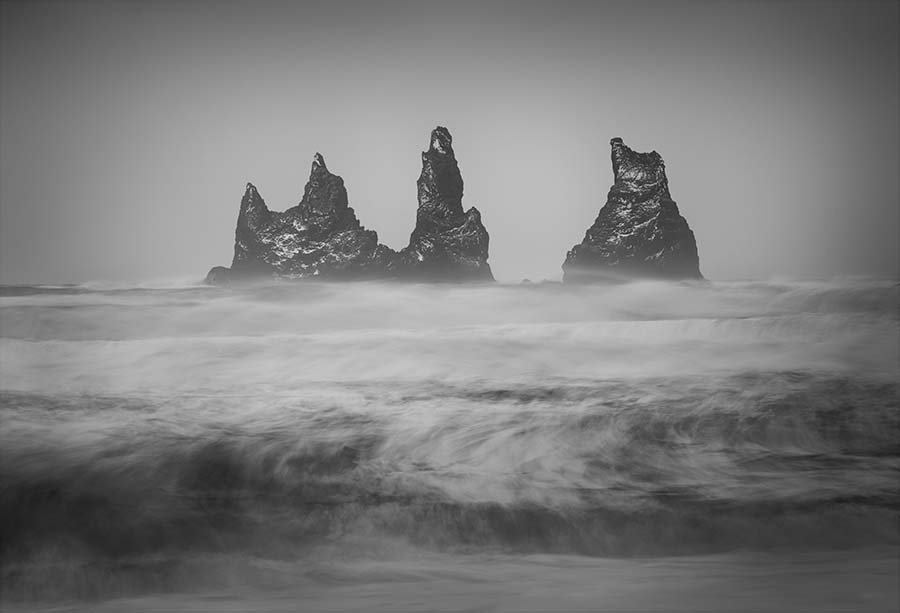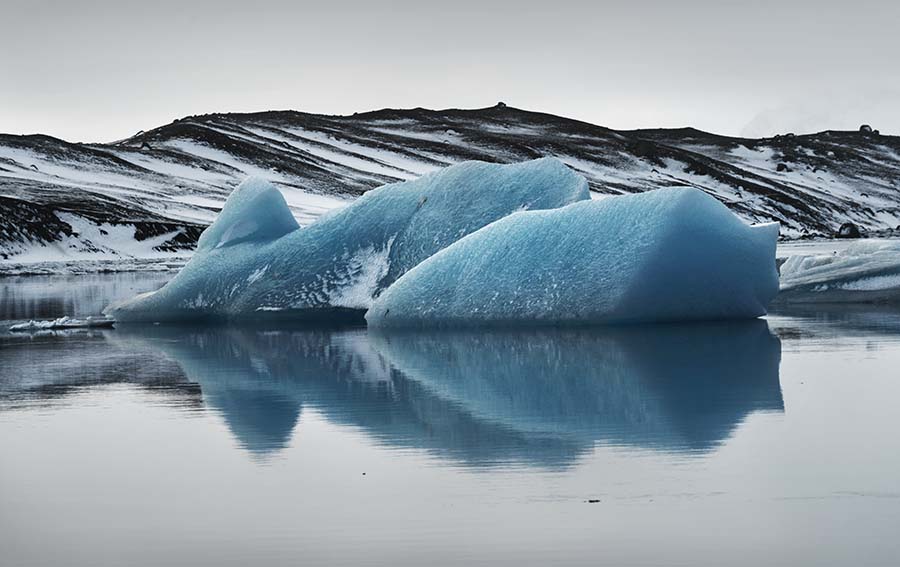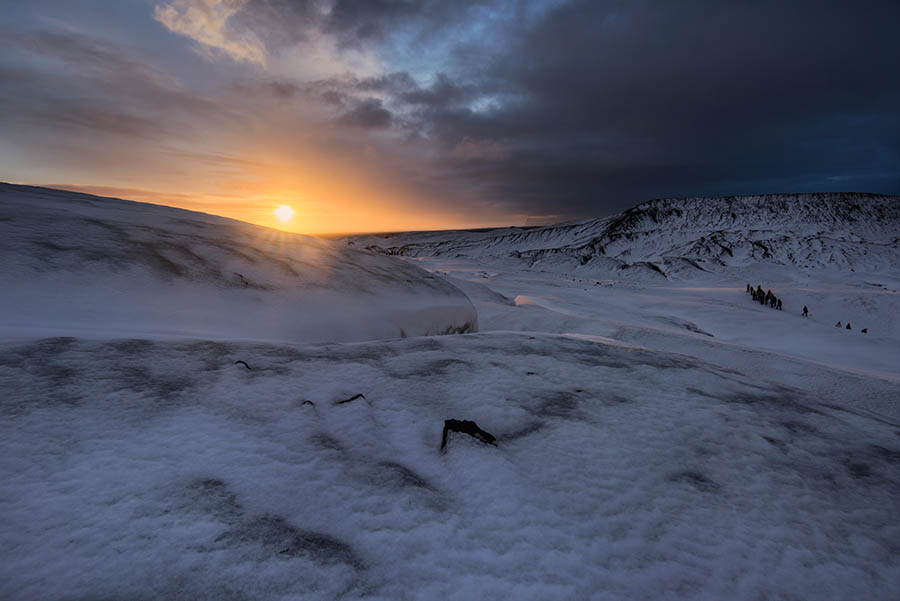Iceland
Traveling to Iceland in winter has the obvious benefit of a snowy landscape, making for wonderful scenery, fewer crowds, and longer nights, providing more opportunity to observe the aurora borealis. These were all factors that contributed to the decision of going in February, in particular during a new moon which would allow for darker skies and better viewing conditions of the northern lights. Our itinerary consisted of two nights in Gullfoss (in the Golden circle), one in Vík, two in Jökulsárlón, one in a place a little west of Vík but still in the south, and finally one in Reykjavik. It did not take long for it to become apparent that even the best laid plans are incapable of overcoming the inherent unpredictability of the weather. There was a blizzard in Reykjavik on the day we were arriving and it was not clear whether we would even be able to fly into the airport. We did arrive in Reykjavik, however there were wide spread road closures which prevented us from driving to our hotel in Gullfoss. After initially seeing the updated road map at the airport, it was surprising that the roads were closed when the wind speeds listed were only peaking around 20-30 in the region we were going. Of course I was assuming these were in kph, but later I discovered that they use meters per second, which corresponds to 45-67mph (1 meter per second is 2.24 mph). Gusts in some areas were in excess of 100mph. This did not seem to be particularly unusual to them. The primary reason for many road closures is wind rather than snow, since cars can actually get blown off the road. The largest sustained wind ever recorded in Iceland was around 140mph, equivalent to an F2 tornado. The weather would prove to be a significant factor during our week-long trip, closing roads, stranding us in hotels, preventing us from traveling where we wanted and when we wanted, as well as occasionally making it difficult for us to even go outside. It snowed everyday we were there, even on days that were otherwise sunny (which was one). The chances of seeing the northern lights quickly seemed to be dwindling due to the nearly incessant cloud cover, however we did see some faint aurora reflecting off the clouds on two separate nights which was still nice.
I was not expecting such harsh weather conditions, nor for it to feel so cold. I was under the impression that the climate is relatively mild in Iceland due to the Gulf Stream, which is true, but this should not make one underestimate the significance of the winter weather there. In fact, the same effect that creates the milder temperatures can also make for more stormier conditions.
I imagine that the strong winds in Iceland arise from the lack of obstacles; not only is the country surrounded by water, but it has almost no trees. After a massive sandstorm created significant damage in the country about 40 years ago, there was a movement to reforest the land. Creating a forested Iceland is a monumental challenge, however. Iceland is estimated to have been up to 40% tree covered before the Vikings began clearing away the forests. Eventually, nearly all the trees were removed and, once gone, getting them back is anything but straightforward. Part of the reason why trees have trouble growing is ground topsoil erosion which is made worse by the lack of supporting tree roots. Another issue is the fact that sheep like to eat many of the plants that try to grow, including the main native tree species, the birch. Currently it is estimated that the country is almost 2% tree covered, which is up by about half a percent since the reforestation effort began.
Aside from the difficult weather conditions, a second surprise was the number of tourists. This was perhaps an unusual situation since our trip happened to fall during the Chinese New Year, but it was actually quite crowded in many areas despite this being the off-season. All that being said, I would not discourage one from travelling to Iceland in winter since not only are the snowy landscapes beautiful, but perhaps experiencing the harshness of the location provides one with a greater perspective of the place itself. In addition, in winter it is possible to explore the ice caves and glaciers, which is a wonderful experience.
If you want to go in winter, I would recommend doing so closer to Spring or Fall rather than in the heart of the season. There is only about 5 hours of daylight in mid-January, whereas there are 11:30 in mid-March, and the weather is likely going to be more manageable toward Spring or Fall. I would not worry too much about the driving, the road conditions are good enough for a rented SUV, and if the roads get too dangerous, they will close. I would recommend skipping the Golden Circle in winter since it is too cold to adequately enjoy and not as nice as the southern part of the country from what we could tell. Since I assume you would travel to Iceland for the scenery, there is little reason to stay in Reykjavik. The city is perfectly nice, but it is better to be somewhere more scenic. The best option may be to stick to the ring road and visit Vík, Jökulsárlón, and perhaps areas father east if you can get there. Since you may be spending time driving or staying sheltered from the storms, and since the daylight hours are limited, it may be best to spend more time at each location than you would normally allot.
For us, the most spectacular sights were the waterfalls along the ring road in the south, the Black Sand Beach in Vík, and Jökulsárlón. You definitely should have waterproof boots at the Black Sand Beach since the waves can run surprisingly high up the sand.
The highlight of the trip was the tour of the glacier and ice caves. We had a one day tour in which a guide took us to the Vatnajökull glacier in a souped-up 4×4 that was capable of managing the deep ice water and steep icy terrain that occasionally required traversing. The ice caves form when flowing water creates a cavity in the glacier. We were given crampons to help grip the glacial ice on the hike. The glacier is shrinking every year, but is still over 3000 square miles with an average thickness of over 1000 feet. Walking on its desolate, but beautiful, surface felt like being on another world. It seemed to be more similar to exploring the moon of a distant planet than being someplace on Earth. The ice caves were remarkable, as well as being beautiful, and being able to walk through them is a special experience that should not be missed if you visit the area.
Overall Iceland was a great place to visit and provided many fantastic scenes and memorable experiences.
Iceland
Traveling to Iceland in winter has the obvious benefit of a snowy landscape, making for wonderful scenery, fewer crowds, and longer nights, providing more opportunity to observe the aurora borealis. These were all factors that contributed to the decision of going in February, in particular during a new moon which would allow for darker skies and better viewing conditions of the northern lights. Our itinerary consisted of two nights in Gullfoss (in the Golden circle), one in Vík, two in Jökulsárlón, one in a place a little west of Vík but still in the south, and finally one in Reykjavik. It did not take long for it to become apparent that even the best laid plans are incapable of overcoming the inherent unpredictability of the weather. There was a blizzard in Reykjavik on the day we were arriving and it was not clear whether we would even be able to fly into the airport. We did arrive in Reykjavik, however there were wide spread road closures which prevented us from driving to our hotel in Gullfoss. After initially seeing the updated road map at the airport, it was surprising that the roads were closed when the wind speeds listed were only peaking around 20-30 in the region we were going. Of course I was assuming these were in kph, but later I discovered that they use meters per second, which corresponds to 45-67mph (1 meter per second is 2.24 mph). Gusts in some areas were in excess of 100mph. This did not seem to be particularly unusual to them. The primary reason for many road closures is wind rather than snow, since cars can actually get blown off the road. The largest sustained wind ever recorded in Iceland was around 140mph, equivalent to an F2 tornado. The weather would prove to be a significant factor during our week-long trip, closing roads, stranding us in hotels, preventing us from traveling where we wanted and when we wanted, as well as occasionally making it difficult for us to even go outside. It snowed everyday we were there, even on days that were otherwise sunny (which was one). The chances of seeing the northern lights quickly seemed to be dwindling due to the nearly incessant cloud cover, however we did see some faint aurora reflecting off the clouds on two separate nights which was still nice.
I was not expecting such harsh weather conditions, nor for it to feel so cold. I was under the impression that the climate is relatively mild in Iceland due to the Gulf Stream, which is true, but this should not make one underestimate the significance of the winter weather there. In fact, the same effect that creates the milder temperatures can also make for more stormier conditions.
I imagine that the strong winds in Iceland arise from the lack of obstacles; not only is the country surrounded by water, but it has almost no trees. After a massive sandstorm created significant damage in the country about 40 years ago, there was a movement to reforest the land. Creating a forested Iceland is a monumental challenge, however. Iceland is estimated to have been up to 40% tree covered before the Vikings began clearing away the forests. Eventually, nearly all the trees were removed and, once gone, getting them back is anything but straightforward. Part of the reason why trees have trouble growing is ground topsoil erosion which is made worse by the lack of supporting tree roots. Another issue is the fact that sheep like to eat many of the plants that try to grow, including the main native tree species, the birch. Currently it is estimated that the country is almost 2% tree covered, which is up by about half a percent since the reforestation effort began.
Aside from the difficult weather conditions, a second surprise was the number of tourists. This was perhaps an unusual situation since our trip happened to fall during the Chinese New Year, but it was actually quite crowded in many areas despite this being the off-season. All that being said, I would not discourage one from travelling to Iceland in winter since not only are the snowy landscapes beautiful, but perhaps experiencing the harshness of the location provides one with a greater perspective of the place itself. In addition, in winter it is possible to explore the ice caves and glaciers, which is a wonderful experience.
If you want to go in winter, I would recommend doing so closer to Spring or Fall rather than in the heart of the season. There is only about 5 hours of daylight in mid-January, whereas there are 11:30 in mid-March, and the weather is likely going to be more manageable toward Spring or Fall. I would not worry too much about the driving, the road conditions are good enough for a rented SUV, and if the roads get too dangerous, they will close. I would recommend skipping the Golden Circle in winter since it is too cold to adequately enjoy and not as nice as the southern part of the country from what we could tell. Since I assume you would travel to Iceland for the scenery, there is little reason to stay in Reykjavik. The city is perfectly nice, but it is better to be somewhere more scenic. The best option may be to stick to the ring road and visit Vík, Jökulsárlón, and perhaps areas father east if you can get there. Since you may be spending time driving or staying sheltered from the storms, and since the daylight hours are limited, it may be best to spend more time at each location than you would normally allot.
For us, the most spectacular sights were the waterfalls along the ring road in the south, the Black Sand Beach in Vík, and Jökulsárlón. You definitely should have waterproof boots at the Black Sand Beach since the waves can run surprisingly high up the sand.
The highlight of the trip was the tour of the glacier and ice caves. We had a one day tour in which a guide took us to the Vatnajökull glacier in a souped-up 4×4 that was capable of managing the deep ice water and steep icy terrain that occasionally required traversing. The ice caves form when flowing water creates a cavity in the glacier. We were given crampons to help grip the glacial ice on the hike. The glacier is shrinking every year, but is still over 3000 square miles with an average thickness of over 1000 feet. Walking on its desolate, but beautiful, surface felt like being on another world. It seemed to be more similar to exploring the moon of a distant planet than being someplace on Earth. The ice caves were remarkable, as well as being beautiful, and being able to walk through them is a special experience that should not be missed if you visit the area.
Overall Iceland was a great place to visit and provided many fantastic scenes and memorable experiences.
Click the images below for a better viewing experience
Click on an image below for a better viewing experience
